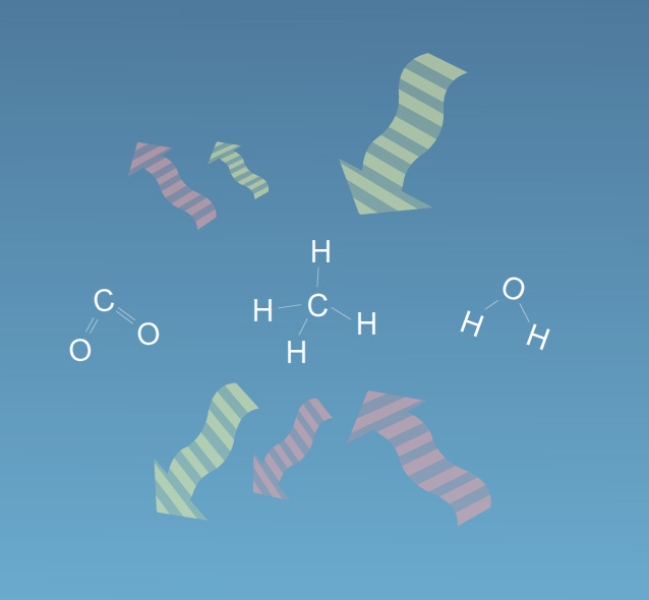Greenhouse gases are atmospheric gases that intercept long-wave (mainly infrared) radiation emitted from the Earth's surface.
By intercepting infrared radiation and re-radiating it in all directions including back to Earth, while capturing little or no incoming solar radiation, greenhouse gases contribute to the warming of the Earth's surface. This is known as the Greenhouse Effect, a naturally-occurring warming process. If there were no greenhouse gases in the atmosphere the average temperature of the earth would be far lower and much of the earth would be frozen. However, pollution is raising the levels of these gases to the point where we may experience severe warming and dangerous changes to the climate in the future.
In general, any gas with molecules made up of three or more atoms absorbs infrared radiation, and are therefore greenhouse gases. Natural greenhouse gases include water vapour (H2O), carbon dioxide (CO2), methane (CH4) and nitrous oxide (N2O). Man-made greenhouse gases include CO2, CH4, N2O, and various chlorine and bromine containing compounds such as sulphur hexafluoride (SF6) and chlorofluorocarbons (CFCs).
Although water vapour accounts for a large amount of the greenhouse gas in the atmosphere, adding more water vapour doesn't increase the amount of water vapour in the atmosphere. This is determined by the temperature of the atmosphere, the warmer it gets the more water it will absorb from the ocean. Excess water vapour condenses as clouds and falls as rain. This process tends to amplify the warming effect of other greenhouse gases, and is known as a feedback effect.

